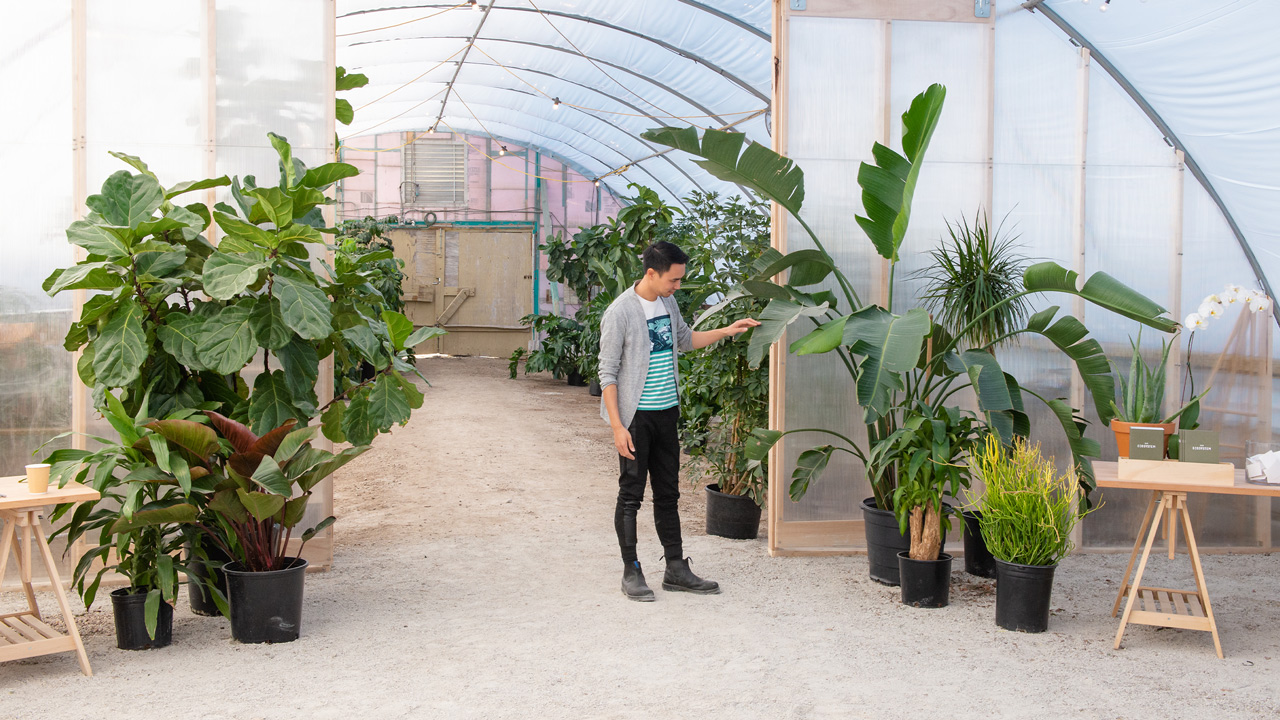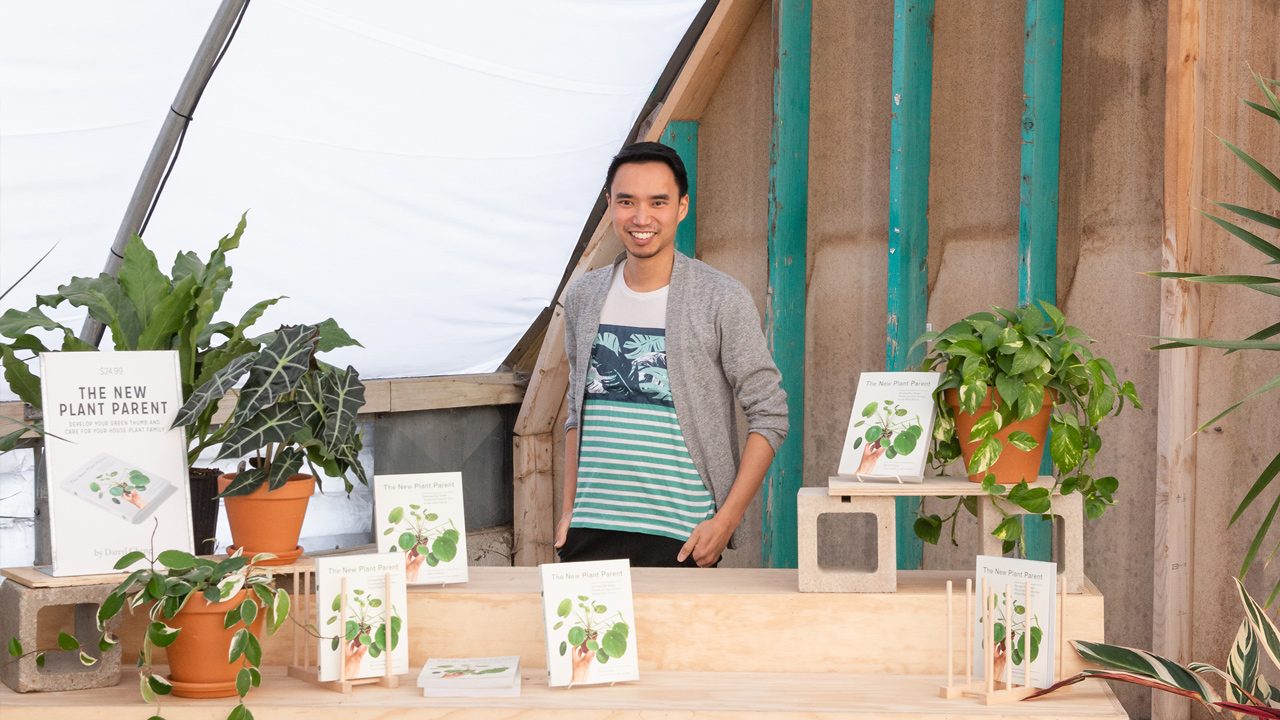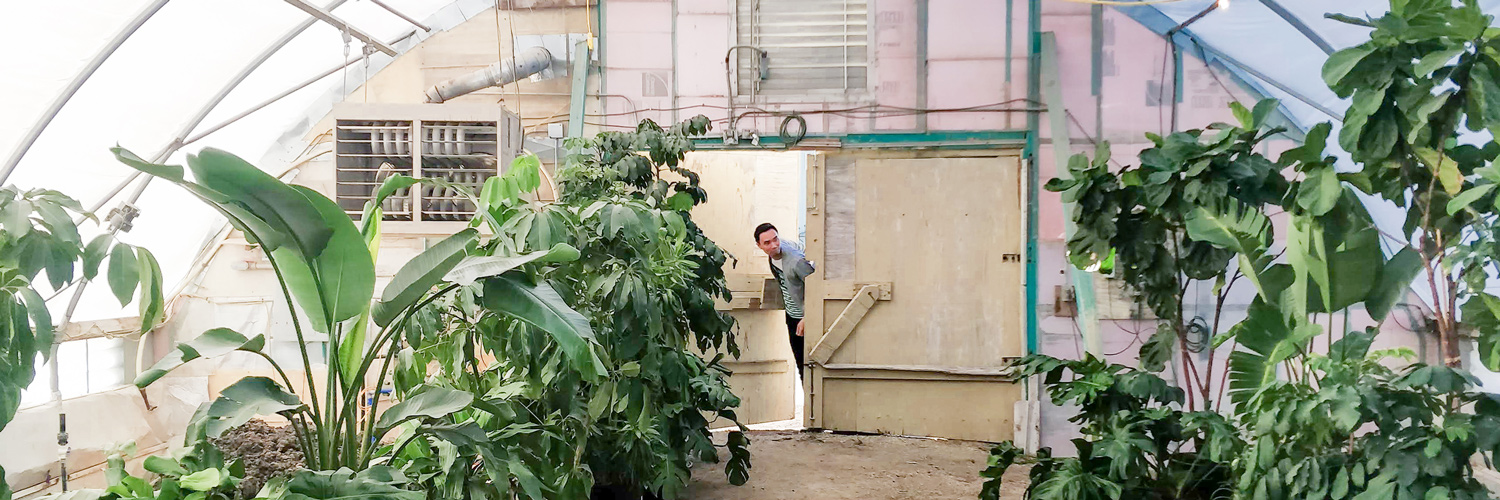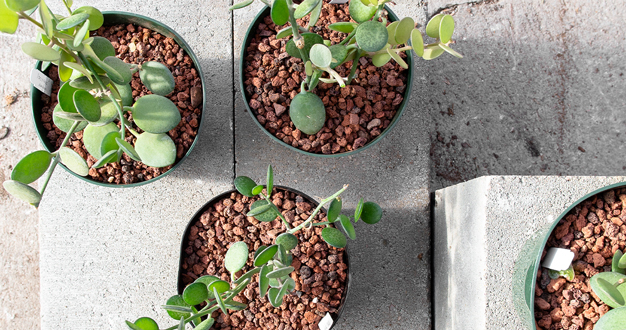
If you were here last Saturday to meet houseplant expert Darryl Cheng, then you already know how exciting it was to have him here. As an author, blogger, and the person behind the hugely popular Instagram account @houseplantjournal, Darryl has gained quite a following. After responding to thousands of questions about houseplants, he’s concluded that the perceived gulf between being a “plant person” and a “black thumb” isn’t as wide as many might think. Success isn’t about the plant or the person – it’s about our underlying perception of plant ownership that takes us down one path or the other.
Darryl encourages houseplant parents to move away from the idea that plant care is a sequence of care strategies – that when performed “correctly” lead to one acceptable outcome – and learn to appreciate plants for the fascinating living systems that they really are. Then, plant parenthood is less of a pass/fail proposition and becomes a more satisfying, life-long relationship with plants. Here we share a few of the key take-aways from Darryl’s seminar that illustrate his approach.

Understanding Light is the First Step
Of course we know that plants need light, and having the right indoor light is a primary concern for any plant owner. We hear terms like “direct,” “bright-indirect,” or “low,” but according to Darryl, we have to be more specific in our understanding of light. A plant uses light – plus water and carbon dioxide – to perform photosynthesis, which fuels plant growth. Darryl calls photosynthesis the plant’s “work.” Some plants require almost direct sunlight to trigger the process, while others can work with much lower levels of light.
But how a person perceives light and how a plant perceives it can be very different things. A person might think “low light” exists in a dark corner away from windows, but this might not be enough even for low-light plants, which according to Darryl, need at least 50-100 foot-candles to do their work. And what we consider “bright, indirect” light – the suggested light level for a vast majority of foliage houseplants – can mean something very different to the plant even when moved just a few feet within a space near the window. We don’t see the difference, but the plant sees it, and it affects everything the plant does from the amount of water it takes in to how it grows or whether it flowers. The right light can mean the difference between a plant that thrives and one that just struggles along for a while.
To demonstrate, Darryl showed us a light meter, which measures ambient light in foot-candles. As he stood in one place and simply moved the hand-held meter around him, the reading fluctuated quite a bit – even in a plastic-covered hoop house where the light might appear to be uniform. For plant parents, Darryl said a light meter is a valuable tool for understanding the light your plants are receiving at different places in your home. Once you understand the light situation, you can better understand your plant’s behaviors. And other aspects of caring for your plant will make more intuitive sense too.
Water Problems are Often Light Problems
Have you ever asked someone how often they fill up the tank in their car? They might say “I fill it up once a week.” But you know that if you bought the same type of car, you couldn’t expect it to also need gas exactly once a week. It really depends on how often you drive, how far you live from work, and lots of other variables.
Darryl used this analogy to illustrate a common misconception about watering – that all plants of a certain type need a similar watering schedule. In fact, just like gas in a car, how often an individual plant needs water depends on a lot of variables – temperature, humidity, soil structure are a few – with light level being the most important one. So what we might think of as “watering issues” – yellow leaves, slow growth, wilting – are really light issues. Without enough light, the plant isn’t able to do its work of photosynthesis, which means it isn’t using up much water. And although the soil may be slowly drying out, it’s likely just the result of evaporation rather than the plant doing its work. Darryl says the way to houseplant success is often to get the light right first – so the plant can perform photosynthesis well – then water according to whether the plant likes consistent moisture, some drying, or complete dryness in its soil.

Plants are Individuals
As plant parents, we may see someone’s plant and wonder why ours doesn’t look exactly the same. We may be tempted to think we’ve done something “wrong” and automatically lump ourselves into the “black thumb” group. But as Darryl reminds us, every plant grows and develops in response to its own unique surroundings. And your home is certainly different than a grower’s nursery where all the variables are closely controlled to grow thousands of almost identical plants. As soon as you move a plant from the nursery to your home, it’s going to change. And it’s going to change in different ways than the one next to it that went to someone else’s home. It’s a good reminder not to be discouraged if your plants don’t look as “perfect” as when you bought them.
It’s About Building a Friendship
When it comes to learning “how” to care for plants, Darryl hopes we see the value of moving from a mentality that focuses solely on a plant’s aesthetics – its décor value or how it compares to others – to a broader appreciation for the plant’s natural life and growth. Plants are alive, and as we’ve seen, they grow, change, and adapt in ways we sometimes don’t expect. This is part of what makes caring for them such a rewarding experience. There may be some frustration along the way – dropping leaves or strange new spots – but these can also be opportunities to learn about their biology, the strategies they use to survive, and how our actions influence them. With that approach, we begin to appreciate the intrinsic value that plants hold – outside of what they do for us. We begin to develop relationships with our plants where their needs reach a compromise with our own. It becomes a friend, in other words – and plant parenthood becomes a lot more rewarding.


Learn More with Darryl
If you’re interested in more of Darryl’s insightful take on houseplant care, stop in the store and check out Darryl’s book, The New Plant Parent: Develop Your Green Thumb and Care for Your House-Plant Family. In this book, Darryl goes deeper into his holistic approach to plant care and offers advice on everything from light to water to containers and soil to his experiences with all kinds of different houseplants. And if you’d like to watch Darryl’s full seminar, head on over to our IGTV channel on Instagram and take a look.


